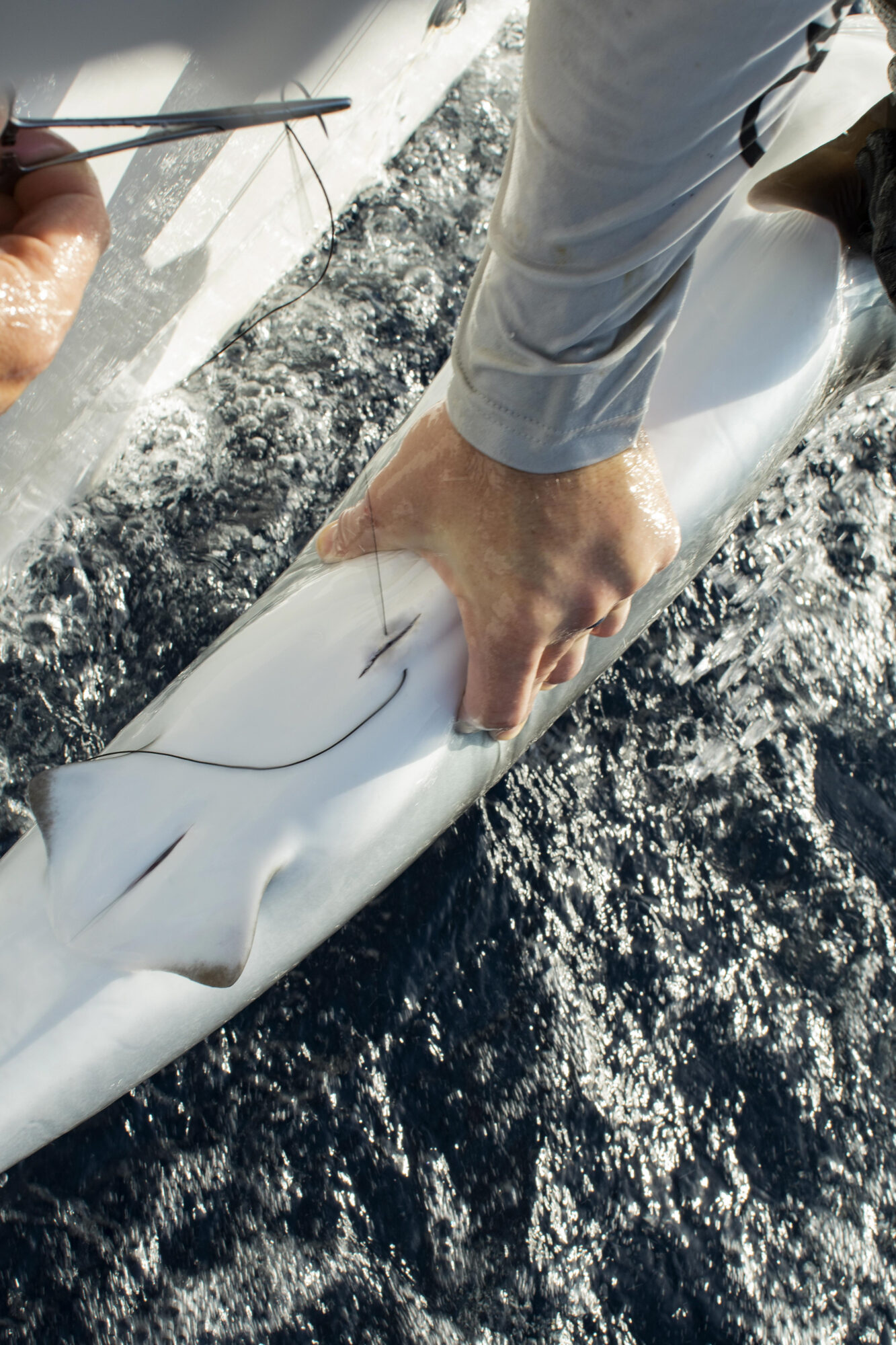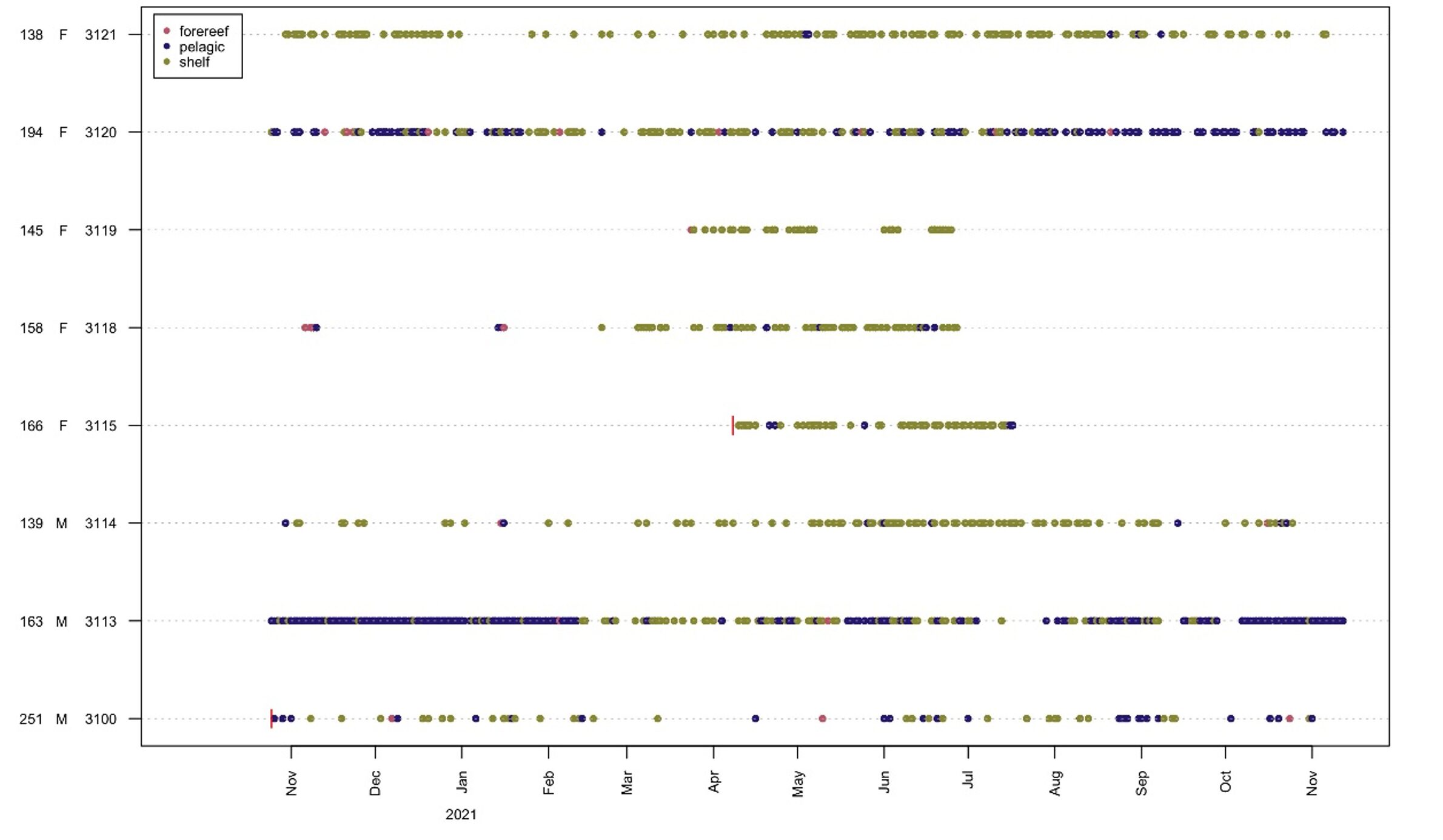Bouys will be bouys
In our last blog we told you about Andros, Bahamas, and the ‘buoy’ where we are studying silky sharks. These sharks are incredibly social; while scientists can define what this means (roughly non-random behavioural structure), it is easy to see this sociality when the watching the animals interact. But scientists need to tell the story with data, so how can we study this behaviour?
One option would be to simply observe the sharks underwater, but we can only be there so many hours of the day. And, perhaps more importantly, the sharks might behave differently in our presence. With that in mind, we look to ‘acoustic telemetry’ to help answer our questions. For those unfamiliar, this method relies on using acoustic transmitters, or tags, that the sharks carry with them. These tags are detected by acoustic receivers, usually fixed in a location of interest. When a shark swims near the receiver, their ‘visit’ is documented with a timestamp. While one acoustic receiver wouldn’t be able to tell you much, scientists have arrays of receivers across study sites and share data from receivers throughout different regions. Collectively, these networks allow scientists to track an animal’s movement patterns over time and across space.

An example of how an acoustic tag 'talks' to an acoustic receiver to document an animal's presence at a given time and place. Image © Great Lakes Acoustic Telemetry Observation System
To date, we have tagged 51 silky sharks with acoustic transmitters. The SOSF has played a major role in supporting this work by funding many of these tags. Some scientists attach the transmitters externally, but this can result in the tag falling off or being shed, so we insert the tag into the animal’s body cavity. A small incision is made, the tag is inserted, and the incision sutured. These animals heal incredibly fast and we know the method is safe because we detect their movements (indicating survival) after their release. For example, our first tagged silky sharks were in 2020 and some are still sending data 5 years on!

After an acoustic tag is inserted into the shark's peritoneum, the incision is sutured to facilitate healing. Photo © Annie Guttridge
An established array of twelve acoustic receivers positioned nearby and at the buoy has allowed our team to monitor residency and movement patterns; we are excited to share some preliminary findings. When we started this project, we presumed that the silky sharks would leave the buoy from time-to-time or exhibit no fidelity at all. And of the 51 silky sharks we have tagged, most do leave the buoy, whether it be on a seasonal or daily basis. But some silkies are unique and seem to have much more fidelity to the buoy and local area, residing for extended lengths. For example, we have numerous sharks that have appeared to establish a year-round residency at the buoy and surrounding habitats. And many like to move between habitats from the pelagic zone to the drop off (shelf) and occasionally onto the fore-reef. What could be driving this, perhaps size or sex or temporal pulses in prey availability? Is their residency affected by sociality? Stay tuned for our next blog where we will address more of our results.

Abacus plot. On the Y-axis, you can see the length (cm), sex, and Tag ID for each shark. On the X-axis is date. Each point represents an acoustic detection, with the key demonstrating where those detections occurred. Figure © Tristan Guttridge
